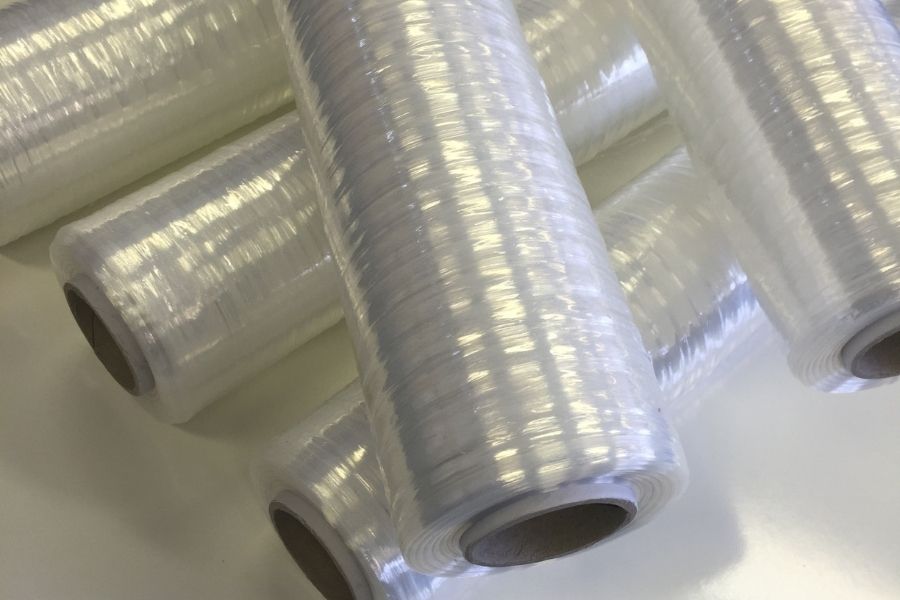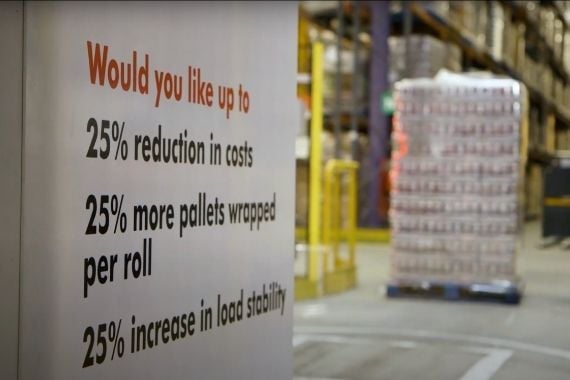For Dave, a Warehouse Manager, problems frequently arise with his machine film. Breakages cause stoppages, halting his operations. Managers like Dave, however, only have time for a quick fix.
But that quick fix always has associated consequences, and they often don’t reveal themselves immediately.
It may be that he reduces the amount of secondary tension in order to stop the film from breaking, but that means the pallet isn’t tight enough and possibly not safe. So now you have another problem for Dave to solve, and he’ll probably do that by layering on rotation after rotation of film until the pallet doesn’t move. Good job; it’s a safe pallet again. But now he’s getting through an entire roll of film just to wrap one pallet, and it will cost a fortune.
If this sounds familiar, the first thing you need to do is find out why the film is breaking.
And here are a few useful things to bear in mind when trying to get to the root of the problem.
"How is it breaking, Dave?"
Observe how the film is breaking. This can provide excellent clues as to why it’s happening.
Top Edge Break
Bottom Edge Break
Edge breaks can occur for a few reasons, roll damage, for starters. If they aren’t handled with care, machine film rolls can easily suffer damage on the edges; scuffs and nicks in the film will often lead to breakages. Make sure you’re not unduly rough with the rolls in storage or when loading the machines. If all the edges are damaged, it could be a winding problem; if the winding has been uneven, then the edges can sometimes overlap, causing breakage.
Centre Break
Central breaks can occur due to a dink in the film. Like edge breaks, damage doesn’t have to have pierced the film for it to break on application. Once again, check for any obvious signs of a scuff or dink on the central part of the roll.
"Have you cleaned your rollers, Dave?"
Check your power stretch rollers. Sticky rollers will pick up debris; a little bit of grit on a roller will just do enough to break your stretch film as it’s applied to the pallet.
Also, sticky rollers can ruin the stretch ratios; if your film is sticking to the roller, it can and will tear it. Most standard films will break if they are sticking to the rollers.
"Have you threaded your film properly?"
Modern stretch films are manufactured with cling on the inside. Most modern machinery will come with a threading guide. Thread the film as guided so that the side of the film goes directly against the pallet you are wrapping. You don’t want your pallets sticking together.
Suppose the film isn’t threaded properly, missing one of the rollers for example. In that case, it may not stretch efficiently, which means it won't be as economical as it should be or, in certain circumstances, secure your pallet as well as it should.
And don’t just shout at Dave for threading it wrong, he may be missing the rollers for a reason, and it's probably because when threaded correctly the film keeps breaking!
Tension break
If the break appears as a straight line from top to bottom, then it could be a tension break.
Tension breaks occur when the film is overstretched. Stretch films are manufactured to be able to cope with a certain amount of even stretch. Different films have different stretch capabilities. The grade of film you need for your machine is dictated by what kind of machine you have and if it’s a power stretch model, by what gear ratios it has.
The simple rule of thumb is that you must match the film to the machine. So if you have a 250% fixed gear semi-automatic stretch wrapper, you need a film that can cope with being stretched that far. If you were to put a 150% grade stretch film in this machine, it would break. It's not the film's fault; it was made that way and is perfectly adequate for a non-ps or 150% stretch machine.
Don’t forget though, that on a power stretch machine, you have two stretching processes: the mechanical stretch in between the rollers, and then the secondary stretch when the film is applied to the pallet itself. So be aware that the secondary stretch needs to be taken into account when selecting a film.
Example:
The pallet above shows an inboard load - a killer for stretch film. It’s no surprise that this pallet will break most stretch films when wrapped under a decent tension, as will the sharp points sticking out of your load.
See if there is any way you can re-stack your pallets to avoid any nasty sharp bits or pallet corners. If you can’t, then there are products on the market that are much better at coping with these problems than the more traditional films. They generally cost a bit more per kilo or roll, but they don’t break when applied to your pallets.
If all else fails, get a stretch film expert in - somebody with plenty of experience with different machines and different films. Get them to help you diagnose the problem and provide a solution.
Get in touch with our team today if you need help to diagnose and solve your film problem.






